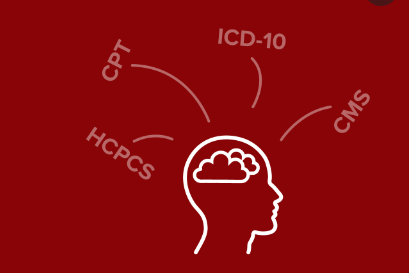MIPS 7: MIPS Performance Feedback and Payment Adjustments

In this article we’ll explore MIPS Performance Feedback and Payment Adjustments. If you haven’t already read the first 3 articles in this series, you can click the following to read them, and if you need the MIPS Quick start guide from Medicare you can get that here.
Understanding MIPS Performance Feedback Reports
In the ever-evolving landscape of healthcare, it is crucial for physical therapy clinic owners to stay informed about the various quality reporting programs. One such program that holds immense significance for physical therapy clinics is the Merit-based Incentive Payment System (MIPS). MIPS is designed to assess the quality of care provided by healthcare professionals and determine their payment adjustments accordingly.
To navigate the complexities of MIPS, physical therapy clinic owners must have a clear understanding of the Performance Feedback Reports provided by the Centers for Medicare and Medicaid Services (CMS). These reports are an essential tool for clinic owners to evaluate their performance and make informed decisions to improve patient care and maximize reimbursement.
The Performance Feedback Reports provide clinic owners with detailed information about their performance in four performance categories: Quality, Promoting Interoperability, Improvement Activities, and Cost. Each category measures specific aspects of patient care and clinic operations, allowing clinic owners to identify areas of strength and areas that need improvement.
The Quality category assesses the quality of care provided by the clinic, focusing on various clinical measures and patient outcomes. The Promoting Interoperability category evaluates the use of electronic health records and the clinic’s ability to exchange health information securely. Improvement Activities assess the clinic’s engagement in activities that improve patient care, enhance care coordination, and increase patient satisfaction. Lastly, the Cost category measures the overall cost of care provided by the clinic.
By thoroughly understanding the Performance Feedback Reports, physical therapy clinic owners can identify their performance scores in each category, compare them to national benchmarks, and analyze how these scores impact their reimbursement. This information is vital for clinic owners as it enables them to make data-driven decisions to enhance the quality of care provided, optimize clinic operations, and maximize reimbursement.
In conclusion, MIPS Performance Feedback Reports hold great importance for physical therapy clinic owners striving to excel in quality reporting and maximize reimbursement. By delving into these reports, clinic owners can gain valuable insights into their performance across different categories and take strategic actions to improve patient care and financial outcomes. Understanding and utilizing these reports effectively are key steps toward mastering MIPS and ensuring the long-term success of physical therapy clinics in an increasingly value-based healthcare system.
Interpreting Payment Adjustments based on MIPS Scores
As a physical therapy clinic owner, understanding the Merit-based Incentive Payment System (MIPS) and how it affects your practice is crucial. MIPS plays a vital role in determining payment adjustments for eligible healthcare providers, including physical therapy clinics. In this subchapter, we will delve into the intricacies of interpreting payment adjustments based on MIPS scores, providing you with a comprehensive guide to navigate this complex system.
MIPS for Physical Therapy Clinics: A Brief Overview
Before we dive into the details, let’s recap what MIPS entails for physical therapy clinics. MIPS is a program developed by the Centers for Medicare and Medicaid Services (CMS) to promote high-quality care and value-based reimbursement. It consolidates various quality reporting programs into a single framework, simplifying the reporting process for eligible clinicians.
Interpreting MIPS Scores and Payment Adjustments
MIPS scores are calculated based on four performance categories: Quality, Promoting Interoperability, Improvement Activities, and Cost. Each category carries a specific weightage, contributing to the final MIPS score. Understanding the scoring system is vital in interpreting payment adjustments accurately.
Payment adjustments based on MIPS scores can have a substantial impact on your clinic’s reimbursement. Positive payment adjustments can increase your Medicare payments, while negative adjustments can lead to reduced payments. Therefore, it is crucial to interpret your MIPS scores correctly to optimize your clinic’s financial performance.
In this subchapter, we will discuss the different payment adjustment thresholds and how they relate to MIPS scores. We will explore the potential impact of various MIPS scores on your clinic’s revenue and provide strategies to improve your scores and maximize reimbursement.
Moreover, we will address the unique considerations specific to physical therapy clinics participating in MIPS. This includes selecting appropriate quality measures, ensuring meaningful use of electronic health records, and engaging in relevant improvement activities. We will provide practical examples and case studies to illustrate how these considerations can impact your MIPS scores and subsequent payment adjustments.
By mastering the art of interpreting payment adjustments based on MIPS scores, you can position your physical therapy clinic for success in a value-based healthcare landscape. This subchapter will equip you with the knowledge and tools necessary to navigate MIPS effectively, optimize reimbursement, and deliver high-quality care to your patients.
Stay tuned as we explore the intricacies of MIPS and provide invaluable insights to help you thrive as a physical therapy clinic owner in an ever-evolving healthcare environment.
Addressing Performance Gaps and Opportunities
In the ever-evolving landscape of healthcare, it is crucial for physical therapy clinic owners to stay informed and adapt to changes in order to provide the best care for their patients. One such change that has significant implications for physical therapy clinics is the Merit-based Incentive Payment System (MIPS). Understanding and mastering MIPS is essential for clinic owners to optimize their clinic’s performance and ensure financial stability.
The first step in addressing performance gaps and opportunities in MIPS for physical therapy clinics is to gain a comprehensive understanding of the program. This includes familiarizing oneself with the various components of MIPS, such as Quality, Promoting Interoperability, Improvement Activities, and Cost. Clinic owners should be well-versed in the specific measures and reporting requirements relevant to physical therapy, as well as the scoring methodology and potential payment adjustments.
Once clinic owners have a solid grasp of the MIPS program, they can identify performance gaps within their clinic and develop strategies to address them. This could involve conducting a thorough assessment of current practices, analyzing data and outcomes, and identifying areas for improvement. It is important to involve key stakeholders, such as clinicians and administrative staff, in this process to ensure a comprehensive and collaborative approach.
Clinic owners should also seize opportunities to enhance performance in MIPS. This could involve implementing evidence-based practices and clinical guidelines, adopting technology solutions to streamline data collection and reporting, and investing in staff education and training. By staying abreast of the latest research and advancements in physical therapy, clinic owners can identify innovative approaches to care delivery and improve patient outcomes.
Regular monitoring and evaluation of performance is essential to ensure progress towards key MIPS goals. Clinic owners should establish a system for tracking relevant metrics, analyzing data, and making informed decisions based on the results. This may involve conducting regular audits, seeking feedback from patients and staff, and benchmarking performance against national standards and industry best practices. Addressing performance gaps and opportunities in MIPS is an ongoing process that requires dedication, adaptability, and a commitment to continuous improvement. By proactively addressing these issues, physical therapy clinic owners can optimize their clinic’s performance in MIPS, provide high-quality care to their patients, and position themselves for long-term success in a rapidly changing healthcare landscape.





